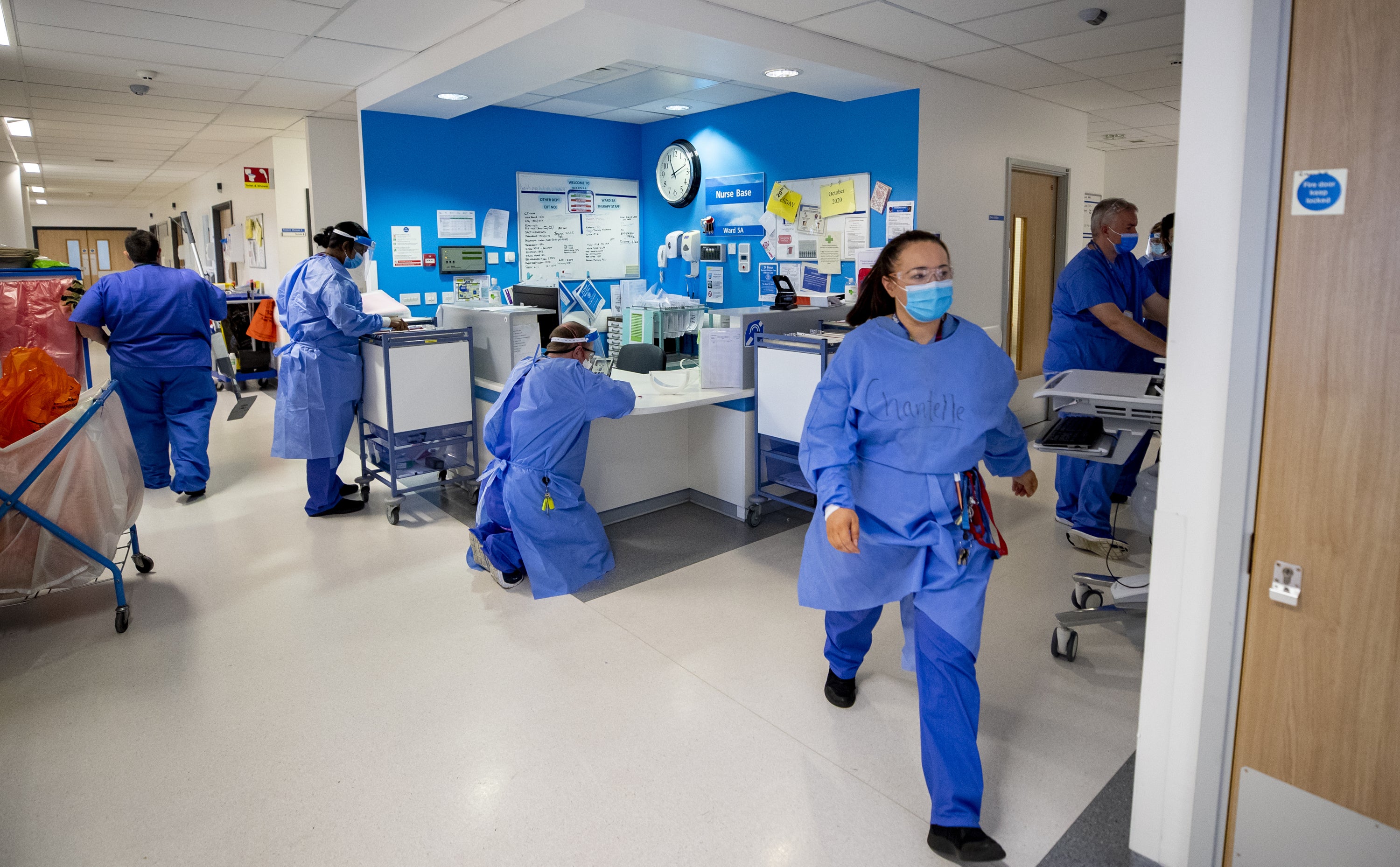London hospitals set to double up patients in wards to tackle winter crisis
Exclusive: London trusts move to reduce ambulance delays as health secretary says this is the NHS’s ‘number one priority’

Your support helps us to tell the story
From reproductive rights to climate change to Big Tech, The Independent is on the ground when the story is developing. Whether it's investigating the financials of Elon Musk's pro-Trump PAC or producing our latest documentary, 'The A Word', which shines a light on the American women fighting for reproductive rights, we know how important it is to parse out the facts from the messaging.
At such a critical moment in US history, we need reporters on the ground. Your donation allows us to keep sending journalists to speak to both sides of the story.
The Independent is trusted by Americans across the entire political spectrum. And unlike many other quality news outlets, we choose not to lock Americans out of our reporting and analysis with paywalls. We believe quality journalism should be available to everyone, paid for by those who can afford it.
Your support makes all the difference.NHS trusts across London are set to start moving patients from A&E onto wards “irrespective” of whether there are beds available, The Independent has learned.
The new model, which involves moving patients every two hours out of A&E and onto wards called acute medical units, has prompted concerns that patients could be “double lodged” on hospital wards.
The move follows the trial of a new system by North Bristol NHS Trust last month, which said it would be moving three patients every hour from A&E onto wards in a bid to address severe ambulance handover delays.
On Thursday, health secretary Steve Barclay said that the “number one” priority for the NHS currently is tackling ambulance handover delays, with a “small” number of trusts accounting for half of all delays.
Long waits for ambulance crews to hand over patients to A&E departments is having a knock-on effect on the service’s capacity to respond to 999 calls.
According to figures from the Association of Ambulance Chief Executives, more than 100,000 patients are likely to have come to some harm this year as a direct result of ambulance handover delays.
Meanwhile, 12-hour waits in A&E are now averaging 100,000 a month, as The Independent reported last month.
In August, NHS England published its winter plan, which revealed that it is seeking to open 7,000 more beds across hospitals in England, although it is not clear how many staff will be needed in order to achieve this.
In a memo sent this month, seen by The Independent, NHS clinicians in one hospital were told that London trusts would be rolling out the North Bristol model at “pace” ahead of winter. The system involves moving one patient from A&E onto a ward every two hours “irrespective of bed availability”.
It will be trialled at six hospitals, including Northwick Park, St George’s, Queen Elizabeth Hospital, Princess Royal University Hospital, North Middlesex, and Queen’s Hospital.
Queen’s Hospital is already running a similar pilot on a smaller scale. However, The Independent understands that the trust is able to pause the stream of patients should safety become a problem.
Speaking to The Independent, one NHS director said the move would lead to “double lodging” patients, which means squeezing more patients into wards, and that this could be “dangerous” for patients.
However, A&E doctors told The Independent that the move should be welcomed, as it spreads the crowding and risk for patients across hospital departments rather than confining it to A&E.
The system relies on hospitals discharging patients in a timely way. On Thursday, the health secretary revealed that the number of people stuck in hospital had reached more than 12,000.
According to a presentation given by the North Bristol trust to NHS leaders and seen by The Independent, prior to implementing the new model, the trust had on average 14 ambulances queueing outside A&E for four hours each day, while its longest handover delays were nine hours – a situation that was causing the local ambulance provider to lose 139 hours a day.
The trust said that its average length of stay in emergency departments was 13 hours.
According to the documents, in August, after adopting the new model, the North Bristol trust was able to reduce the number of ambulances queueing outside A&E departments, and reduce its longest delays to three hours, resulting in the average time patients spent in A&E dropping to 10 hours.
Dr Nick Scriven, a former president of the Society for Acute Medicine, said: “This will only be a safe and viable model with 24-hour decision makers in place and very low base ward occupancy levels, so there must be complete confidence this is achievable before any rollout is considered.
“Much more planning and consultation is needed to develop a comprehensive programme that factors in staffing, expertise, patient needs, flow through and out of hospital, and contingencies when problems occur.”
A spokesperson for the NHS in London said: “It is right that the NHS in London looks at ways to safely reduce ambulance handover delays – including by learning from trusts elsewhere in the country – and new processes are only implemented following consultation with clinicians and when it is safe to do so.”






Join our commenting forum
Join thought-provoking conversations, follow other Independent readers and see their replies
Comments